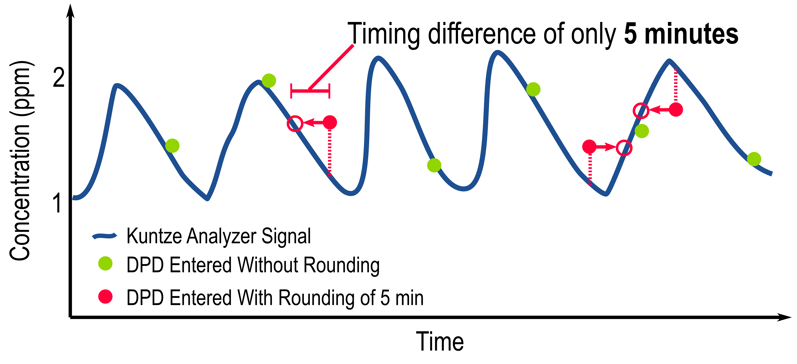Many applications have fast-moving oxidant concentrations, while others are more gradual. Regardless of the application, the timing of reference measurements is critical.

In the plot above, the Kuntze analyzer signal (blue line) matches well with the DPD measurements entered without rounding (green circles). The rounded DPD measurements (filled red circles) do not match with the Kuntze signal. If they had been entered without any rounding (empty red circles), they would have matched up. This plot shows how even small discrepancies (5 minutes or less) in the timing can affect the quality of the reference measurements.
To avoid timing errors, follow this procedure:
- Make a note of the time the sample is taken using the clock in the upper right-hand corner of the analyzer.
- Take your reference measurement as quickly possible.
- Enter your measurement using the time you noted in Step 1 without rounding the time.
